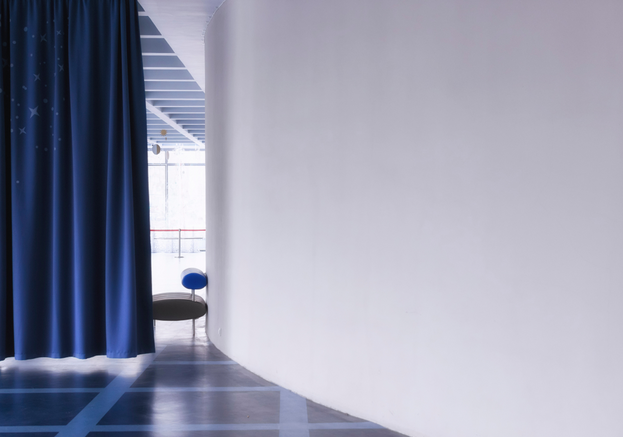Introduction to Pipe and Drape
What is Pipe and Drape?
Pipe and drape is a modular system consisting of steel or aluminum pipes and fabric drape. It is commonly used at events to create backdrops, room dividers, or conceal certain areas. The pipes include uprights (vertical poles), crossbars (horizontal poles), and bases to stabilize the structure. The drapes are typically made of various fabrics and come in multiple colors and textures. One of the most significant advantages of pipe and drape is its flexibility; it can be configured in countless ways and is easily transportable, making it a staple in the event industry.
Why use Pipe and Drape?
There are several reasons why pipe and drape is a preferred choice for event planners:
- Aesthetic Enhancement: Pipe and drape can instantly transform a space. Whether aiming for elegance at a wedding, a branded experience at a corporate event, or a thematic setting at an exhibition, pipe, and drape can adapt to achieve the desired ambiance.
- Space Modification: The space can often feel overwhelming or impersonal in large venues. Pipe and drape can divide rooms into smaller, more intimate spaces. This is also helpful for creating designated areas within an event, such as a lounge, dining area, or registration zone.
- Concealment: Events often take place in venues with existing decor or features that may not align with the event’s theme. Pipe and drape are an effective way to hide any unsightly elements or background distractions.
- Cost-Effective: Compared to constructing walls or using other types of partitions, pipe, and drape is often more affordable and offer a better return on investment due to their reusability.
- Customizability: With various fabrics, colors, and configurations, pipe and drape can be customized to fit the specific design vision for any event.
- Ease of Use: Pipe and drape systems are designed for quick and easy setup and takedown, making them convenient for events with tight schedules.
At Quest Events, we pride ourselves on providing industry-leading pipe and drape solutions. With our wide array of options and presence across North America, we can help you achieve a seamless and visually stunning environment for your event.
Jump Links
- Planning Your Pipe and Drape Setup
- Components of a Pipe and Drape System
- Step-by-Step Guide to Setting Up Pipe and Drape
- Tips for a Professional-Looking Setup
- Customizing Your Pipe and Drape Setup
- Safety Considerations
- Dismantling and Storing Your Pipe and Drape System
- Conclusion
- Event Pipe & Drape Install FAQs
Planning Your Pipe and Drape Setup
Determining Your Needs
Before you embark on installing pipe and drape, it is essential to assess your specific requirements. Consider the purpose of your event – is it to act as a backdrop, divide spaces, or conceal something? Knowing this will guide you in selecting suitable materials and quantities.
Space and Layout Considerations
Evaluating the space and layout of your venue is crucial. Take note of the dimensions, shape, and any existing structures that could affect your setup. Consider how your guests will move around and interact with the space. Ensuring that your pipe and drape system complements the flow of your event is vital for success.
Selecting the Right Type of Drape
Different events may call for different types of drape. For instance, velour drapes are excellent for a more luxurious look and effective in sound dampening, making them ideal for corporate events. In contrast, sheer drapes can add a romantic touch, making them suitable for weddings. Take into account the aesthetic and practical needs of your event when making your choice.
Budget Planning
When planning for pipe and drape, it is essential to establish a budget. Remember that while you might be tempted to go for the cheapest options, quality is vital in ensuring a professional look and safe installation. At Quest Events, we offer options catering to various budgets without compromising quality.
Components of a Pipe and Drape System
The components of a pipe and drape system form the foundation necessary to erect a versatile and customizable backdrop or partition. These components include:
Uprights
Uprights are the vertical poles that provide the primary support for the pipe and drape system. They are available in various materials, including aluminum and steel, and come in different heights. Some uprights are adjustable, allowing you to alter their height based on the requirements of your event.
When selecting uprights, consider the height of the ceilings in your venue and the desired height of your drapes. Uprights are crucial in determining the overall structure and appearance of the setup, as they define the height at which the drapes will hang.
Crossbars
Crossbars, or horizontal poles, are used to hang the drapes. They connect between two uprights and provide a rod from which the drapes are suspended. Like uprights, crossbars come in different lengths, allowing you to control the width of each section of your pipe and drape setup.
Telescopic crossbars are available, which can be extended or retracted to achieve the desired width. It’s essential to ensure that the crossbars are sturdy and can support the weight of the drapes, especially if you are using heavier fabric.
Bases
Bases are the foundation of the pipe and drape system. They are flat, heavy pieces that stabilize the uprights and ensure the structure remains secure. Bases are typically made from steel and come in different sizes and weights.
Larger and heavier bases are needed for taller or wider setups to ensure adequate stability. Some bases come with pins, which are used to secure the uprights in place. When positioning the bases, it’s crucial to align them correctly according to your layout plan, as this will determine the placement of the entire system.
Drape
Drape are the fabric panels that hang from the crossbars. They come in various materials, colors, and patterns, allowing you to achieve your event’s desired look and feel. Common materials for drapes include polyester, velour, and banjo cloth.
When selecting drapes, consider the purpose they will serve. For example, heavier velour drapes can dampen sound and create a more luxurious atmosphere. At the same time, lighter materials like polyester may be suitable for a more airy and open feel. The length of the drapes is also essential; they should be long enough to hang from the crossbar to the floor for a polished look.
When installing pipe and drape, it’s essential to understand each component and how they work together to create a stable and aesthetically pleasing setup. Select pieces that match your venue’s specifications and your event’s theme. As the market leader, Quest Events offers a vast selection of high-quality pipe and drape components to suit any event requirement.
Step-by-Step Guide to Setting Up Pipe and Drape
Assembling the Bases
Start by placing the bases at the positions where the uprights will go. Make sure they are aligned and spaced according to your layout plan. If your bases have pins, ensure they are securely attached. This is where the uprights will be placed.
Connecting the Uprights
Slide the uprights over the pins on the bases. If your uprights are adjustable, set them to the desired height now. Ensure they are vertical and securely in place.
Installing the Crossbars
Attach one end of the crossbar to the top of an upright. Then, stretch the crossbar to the adjacent upright and connect it. Make sure the crossbars are level and securely fastened to the uprights.
Hanging the Drape
Before attaching the drapes:
- Ensure they are wrinkle-free and clean.
- Slide the drapes onto the crossbars.
- Space them evenly and ensure they touch the floor or are at your desired length.
Adjusting and Securing the System
After hanging the drapes:
- Step back and assess the setup.
- Make any necessary adjustments to the height and alignment of the uprights and crossbars.
- Ensure the drapes are hanging straight and evenly spaced.
Tips for a Professional-Looking Setup
Correctly Measuring and Spacing Uprights
Measure the distance between each upright and ensure they are spaced evenly. This is crucial for a uniform and professional appearance.
Ensuring Taut Drape
The drape should be taut but not overly stretched. This prevents sagging or bunching, which can detract from the aesthetic appeal.
Creating Smooth Transitions Between Drape
To create seamless transitions between drapes, slightly overlap them and ensure they are the same length. This creates a continuous, polished look.
Customizing Your Pipe and Drape Setup
Adding Lighting or Projections
Incorporate lighting to enhance the ambiance of your event. LED lights or spotlights can highlight specific areas or create a dynamic backdrop.
Incorporating Different Fabric Types and Colors
Mix and match different fabric types and colors to create a unique and engaging environment. Experiment with textures and patterns to find what best suits your event’s theme.
Designing Unique Layouts
Be bold and think outside the box. Create curved lines, enclosures, or multi-layered backdrops to add depth and interest to your setup.
Safety Considerations
Proper Weight Distribution
Ensure that the weight of the drapes is evenly distributed across the crossbars and that the bases are heavy enough to support the entire system.
Securing Taller or Heavier Systems
Use sandbags or weights to stabilize the bases for taller or heavier setups. Ensure that all connections are secure.
Monitoring for Hazards
Regularly check your pipe and drape system for any signs of instability or hazards throughout the event. Address any issues immediately.
Dismantling and Storing Your Pipe and Drape System
Taking Down the System
Begin by carefully removing the drapes from the crossbars, then disassemble the crossbars and uprights. Finally, remove the bases.
Properly Folding and Storing Drape
Fold the drapes neatly to prevent wrinkles and damage. Store them in a dry, cool place.
Organizing and Storing Hardware Components
Keep the uprights, crossbars, and bases organized. Store them in a safe place where they won’t be damaged.
Conclusion
The Importance of a Professional Pipe and Drape Setup
Implementing a professional pipe and drape setup is paramount in establishing any event’s desired atmosphere and functionality. This versatile system offers the ability to enhance a space aesthetically, create functional room divisions, and conceal any undesirable features in a venue.
When executed correctly, a pipe and drape setup can add an element of sophistication and purpose to events ranging from corporate gatherings and weddings to trade shows and exhibitions.
It is essential to select quality components that are both durable and align with the theme of your event. Thoughtful planning, precise measurements, and attention to detail in the assembly are critical factors in achieving a polished appearance.
Moreover, customization with various fabric types, colors, and additional elements, such as lighting or projections, can elevate the ambiance and make a memorable impression on attendees.
In addition to aesthetics and functionality, safety should always be noticed. Ensuring proper weight distribution, securing tall or heavy setups, and monitoring potential hazards is vital in creating a safe environment for all event participants.
Lastly, proper dismantling and storage procedures will prolong your pipe’s and drape components’ lifespan, ensuring they remain optimal for future use.
As North America’s market leader, Quest Events is committed to providing top-tier pipe and drape, scenic, décor, and furnishing solutions. With our extensive inventory, unparalleled expertise, and a vast network of locations across the US and service capabilities in Canada, we are equipped to help make your event a resounding success. Trust in Quest Events to partner with you in creating captivating and efficient environments through our high-quality rental solutions and installation services.
Event Pipe & Drape Install FAQs
What material is best for draping at a corporate event?
Velour is often favored for corporate events due to its luxurious look and sound-dampening properties.
How can I make my pipe and drape setup more stable?
Use heavier bases for tall or heavy drapes, and consider using sandbags or weights to stabilize the system further.
Can I use my fabric for drapes?
Yes, you can. However, ensure the fabric is appropriate for the setup and meets safety regulations.
How do I know what size of pipe and drape components to rent?
Evaluate the space and layout of your venue and determine the purpose of the pipe and drape. Quest Events can also assist you in selecting the right components based on your event’s needs.
How can I add branding or custom graphics to my pipe and drape setup?
You can incorporate branding or custom graphics by using printed drapes or banners. Consult a specialized print service to create custom-printed fabrics with your logo, branding elements, or graphics. These can be hung from the crossbars alongside or in place of the standard drapes. Additionally, you can use projection mapping to display logos or graphics on plain drapes. Quest Events also offers solutions for custom branding and can assist in integrating these elements into your pipe and drape setup.


